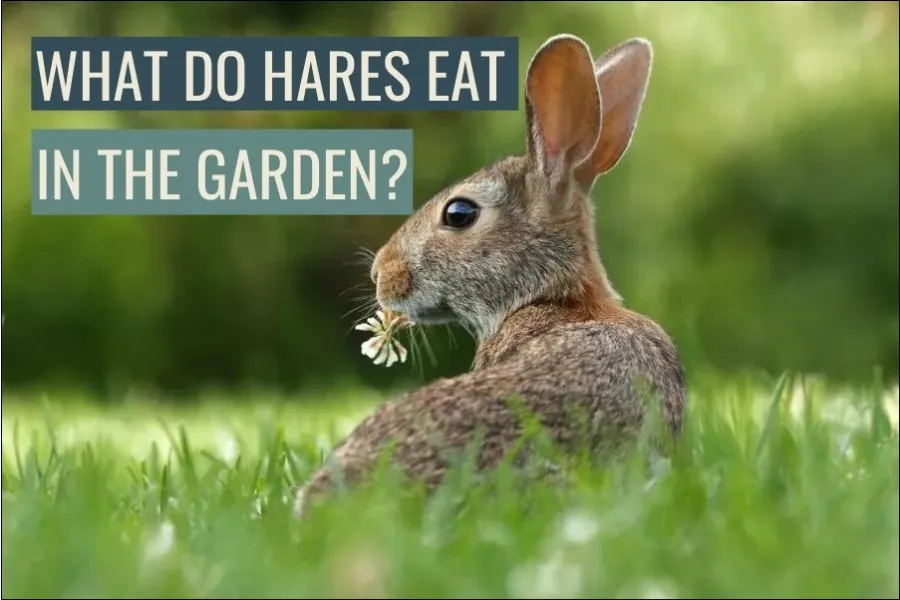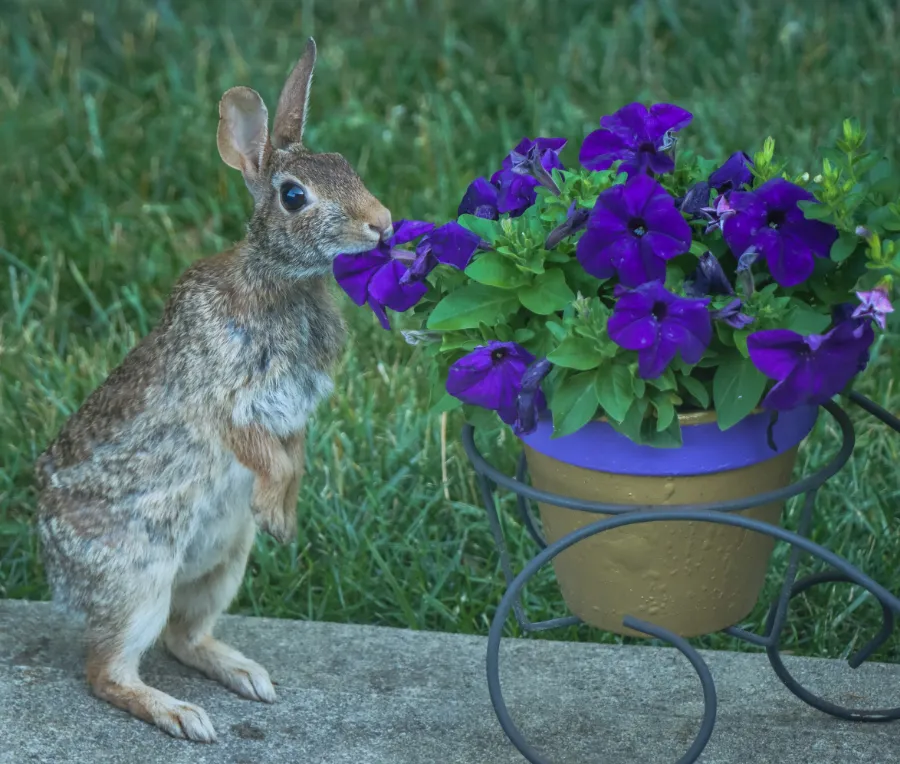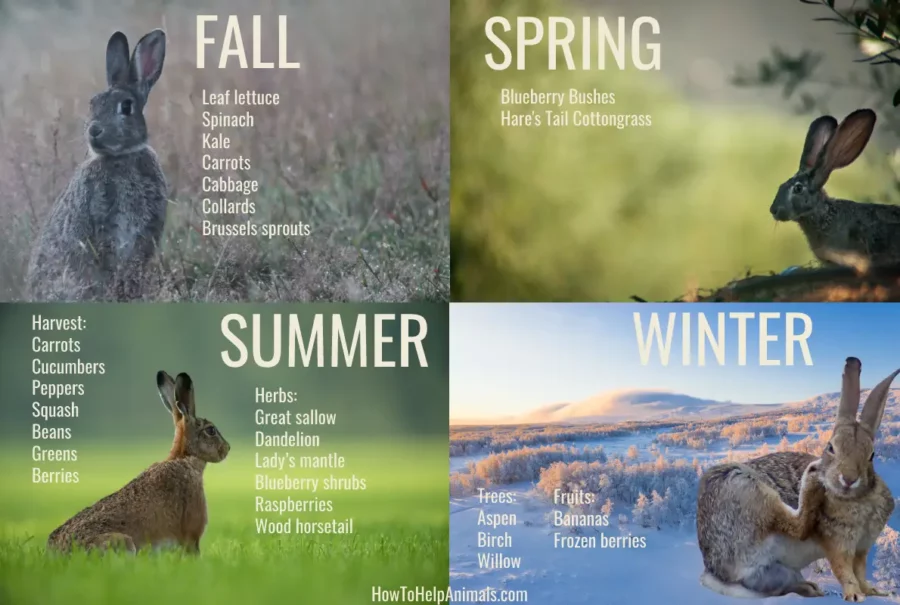
Hares are well-known herbivores who exclusively eat twigs, herbs, and grass. They are equipped with both good digestion which is adjusted to the indigestible food and a good set of teeth made for effective work. The hare’s diet changes between seasons and they eat what they are able to find. In this article, I will go through each season and give ideas on how you can invite hares to your garden.
Hares eat almost anything from the garden. However, they are most fond of vegetables. Berries, cabbage, carrots, cucumber, fennel, fruits, and lettuce. They will also eat bark, leaves, moss, and twigs.
When the hare grazes in the fields they put themselves at risk. The risk of being attacked by a predator increases significantly when they are left open instead of resting in a safer resting space. The long-term decline in the hare population is at devastating numbers and the hares need our help. Why not provide the hares with a safe space where they can rest, and eat some good treats?
What do hares eat in the garden?
The hare’s regular diet consists of very indigestible foods since it contains a lot of fibers. A lot of the nutrients are also bound into the vegetable fiber which is harder to assimilate. The hare can only assimilate 30-40% of the food they consume. While some plants have different difficulties digesting there are some that are much easier. Goat willow or great sallow for example are easier to digest than birch. They can consume coarser sallow twigs (5-6mm) than birch twigs (2-3mm).
What do hares eat in the garden during spring?
In the wild during spring, the hare usually eats blueberry shrubs and withered grass from last year. You can replicate their natural diet easily by planting blueberries for them. However, blueberries take a long time to grow. You can’t expect any fruit for the first 2 to 3 years. The harvest turns greater after 5 years, and after 8-10 years the shrubs are fully grown. You can also buy grown plants and put them in your garden. I would recommend planting both seeds as well as grown plants together.
Besides blueberry shrubs, the hare also likes to consume hare’s tail cottongrass. The cottongrass bloom for the first time early in the spring, which is much appreciated by the hare. These fluffy cotton wool balls sway all summer and are easy to grow yourself with some seeds. They grow up to 1½ft (45cm) and like it where it’s moist.

What do hares eat in the garden during summer?
Hares tend to eat a lot of herbs, grass, and leaves during the summer. Studies have shown that they prefer herbs more than grass. A study showed that they prefer hare’s tail cottongrass the most.
Hare’s favorite herbs during summer:
- Great sallow
- Dandelion
- Lady’s mantle
- Blueberry shrubs
- Raspberries
- Wood horsetail
Herbs like hairy wood-rush, hare’s tail cottongrass, and wavy hair-grass come further down the list.
If you want to dedicate crops to the hares you might want to consider growing vegetables you can harvest during summer.
Examples of vegetables you can harvest during summer hares can eat are:
- Carrots
- Cucumbers
- Peppers
- Squash
- Beans
- Greens
- Berries
❗ Corn, onions, leeks, garlic, potatoes, and lettuce can be harvested in summer but may be lethal for the hare to consume.
What do hares eat in the garden during fall?
In the wild, the hares enjoy the fresh vegetation of what’s left, while converting to their winter diet. As long as berry shrubs aren’t covered with snow they are still suitable feed.
There are some vegetables you can grow in your garden that are ready for harvest in the fall the hare can eat.
Examples of vegetables you can harvest during fall hares can eat are:
- Leaf lettuce
- Spinach
- Kale
- Carrots
- Cabbage
- Collards
- Brussels sprouts
What do hares eat in the garden during winter?
Hares can be pretty grim against smaller pines and spruces, especially if they are planted inside a greenhouse. The high nutrient density is what brings the hares to them. The leaves and twigs contain a lot of nitrogen and other nutrients.
One of the most fascinating things about the hares eating birch is their method. After the hare has grazed on a twig of birch they let the bud be. You can find dozens of buds laying on the ground, discarded by the hare. This can look like weird behavior since the buds also include a lot of nutrients the hares need. Although, there are a lot of inhibitory toxins which protect the plant from being eaten. There are plenty of different types of graze inhibiting chemical substances the plants produce in order to scare herbivores. They work differently from each other, where some can harm the herbivore, others can obstruct the ability to assimilate the food, and others can affect their reproduction ability.
Unless you have birch, aspen, and willow in your garden, there is other stuff you can provide the hares with during the cold winter. I usually prefer giving them something sweet with a lot of calories. Peeled bananas contain a lot of potassium and calories which provides the hare with a lot of energy. Buying frozen berries from the store and providing them will also help them gain enough energy to stay warm. Make sure to give them leafy greens with a lot of fiber as well to make their digestive system work and produce heat. The darker the better.
In order to provide them with plenty of nutrients and minerals during the cold, a recommendation is to put up a salt lick. Just hang them low enough for them to reach. If you want to invite deer to your garden, you can provide salt licks for them as well but higher up.
Hares are able to add body weight during winter, (exception for leverets who were born late and haven’t fully grown up yet). Other animals, like the squirrels, have a harder time keeping their weight stable during the winter months. The hares are in their best shape between January to March but are in their worst shape between June and October. The least amount of daily food in order to keep their weight is 500g. There hasn’t been any research on the wild herbivores in the northern parts of the world, but yet, you can assume there is competition for food among hares, deer, moose, and others. Despite feeding on different heights, there seems to be some overlapping in the choosing of herbs.
Summary
Hares eat a lot of twigs and shrubs throughout the year. They are very fond of blueberry shrubs, and vegetables you can grow in your garden. They are also prefer great sallow, dandelions and lady’s mantle. One of their favorites are hare’s cottongrass which you can grow yourself.
It’s a great idea to dedicate an area in your garden to berries of different sorts. Hares thrive on blueberry shrubs in spring, but also raspberries in summer.
If you instead want to grow flowers instead of vegetables and fruit, go for dandelions, great sallow, Lady’s mantle and wood horsetail.
Never offer corn, onions, leeks, garlic, potatoes, or lettuce to hares since it can be harmful.
If you want to provide the hare with some extra minerals, a salt lick will give them an extra boost. Be aware not only hares enjoy the tasty salt lick, but also deer. If you would like to provide both animals with salt licks, ensure they are at different heights.

